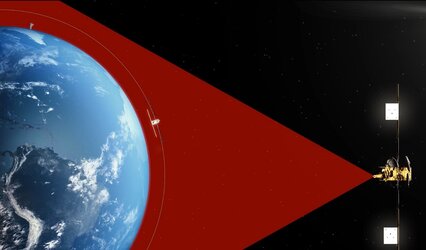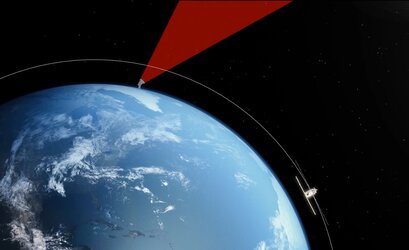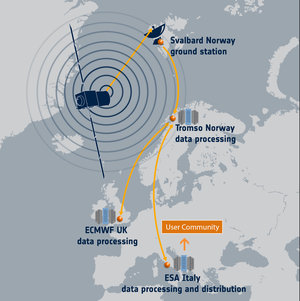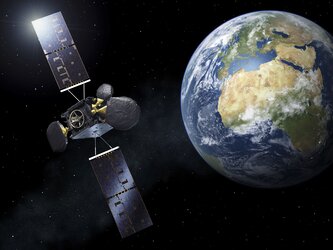

EDRS ground segment
The European Data Relay System reduces the delay in the transmission of Big Data from the low orbiting satellites. Most orbiting satellites can only downlink the data they’ve been gathering when directly over their ground station. This typically results in around ten minutes of downlink time for every 100 minutes orbit.
Satellite operators usually have to add more ground stations to their networks to increase the limited ten minute downlink restriction. This is complex and generally only adds a few more minutes. Routing information through existing ground station networks like that of EDRS is much more efficient.
The EDRS space nodes’ positions in geostationary orbit ensure visibility between EDRS and a very large portion of the Earth observer’s orbit, and guarantee a permanent data downlink between the EDRS space nodes and the ground. This means the Earth observers can send all the information they collect directly to EDRS, rather than having to store it and wait for a ground station to be visible.
EDRS’s hub is its Mission Operations Centre (MOC) in Ottobrunn (DE) developed by Redu Space Services (BE). The MOC collects user information like their satellite’s orbital position, plans and requests the intersatellite links, their duration and tasks the EDRS nodes accordingly. The MOC also prepares the data for downlinking to the EDRS ground stations in Weilheim (DE), Redu (BE) and Harwell (UK). They receive the data from the Earth observers, which is then ready to be picked up automatically.





